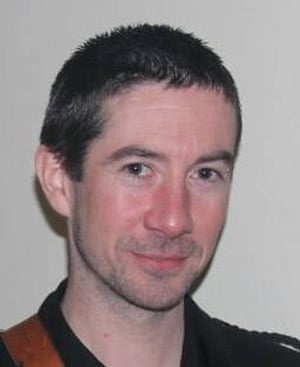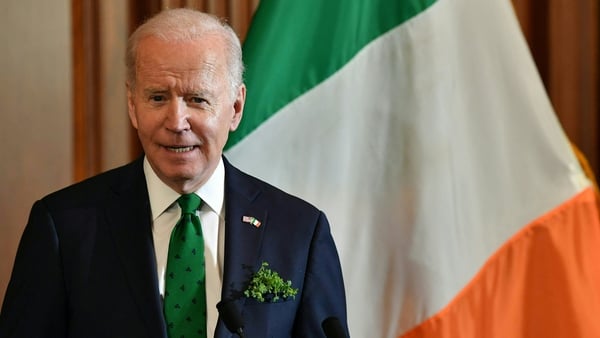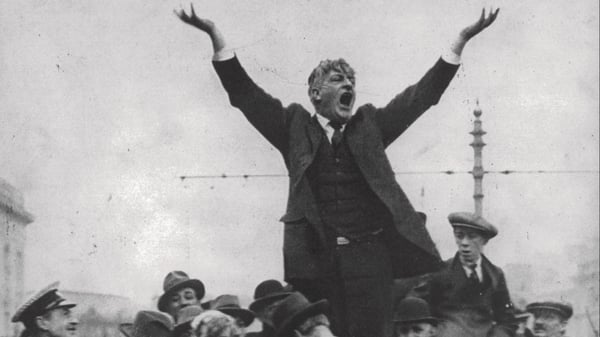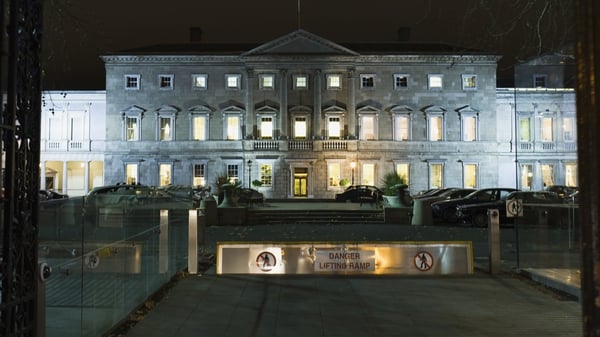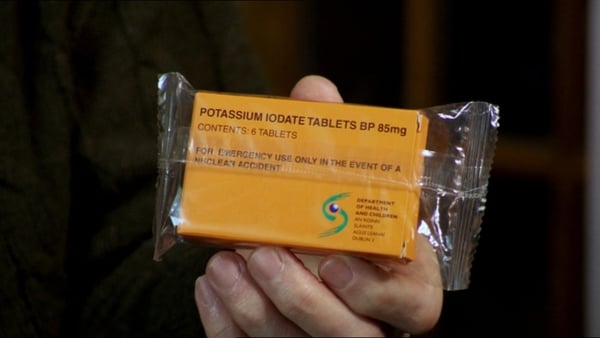Analysis: the Carnsore Point festivals in the 1970s helped put a stop to the ESB's plans for a nuclear power plant
Last year, the Environment Minister, Eamon Ryan, travelled to Paris to formally agree the establishment of a direct electricity connection between Ireland and France. Dubbed the ‘Celtic Interconnector’, the estimated €1.6 billon project will see more than 570 kilometres of undersea cable laid between Brittany and Cork, with the capacity to power 450,000 homes.
The project will hasten Ireland’s integration within the broader continental electricity systems, a goal made more acute due to possible instabilities presented by Brexit and the war in Ukraine. Moreover, the interconnector is a further step towards a European Super Grid network; one intended to suppress prices, whilst guaranteeing the continuity of a carbon-free supply in coming years.
We need your consent to load this rte-player contentWe use rte-player to manage extra content that can set cookies on your device and collect data about your activity. Please review their details and accept them to load the content.Manage Preferences
From RTÉ News, Eamon Ryan says Celtic Interconnector will lead to lower energy prices
Public reaction was muted. Few appeared interested in a key measure to ensure stable electricity supplies for future generations. This contrasted sharply with debates surrounding other issues like Dublin's 'live' Christmas crib last December or The Wolfe Tones. Reactions from political figures, though largely positive, also received limited attention. Nevertheless, the minister himself was ebullient, lauding an agreement that would help ‘us to achieve our climate objectives and reduce the cost of electricity’. A ‘win win’, Ryan asserted.
However, it was a political achievement which came with an ironic feature: Ireland will receive French electricity produced from nuclear power plants. This aspect would be unremarkable, but for the fact that much of the Irish political spectrum have long opposed nuclear energy, culminating in a ban on its generation in 1999. The vociferousness of some opponents once prompted broadcaster Joe Duffy to quip that anyone debating the issue in Ireland risked being 'taken out and shot!'
The near-ubiquitous nature of political resistance to nuclear energy could lead one to conclude that opposition has been, together with our 'neutrality', an eternal Irish State principle; one adopted from the very moment Ernest Walton (an Irish physicist) first helped to split the atom in 1932. The historical reality, however, is more nuanced.
We need your consent to load this rte-player contentWe use rte-player to manage extra content that can set cookies on your device and collect data about your activity. Please review their details and accept them to load the content.Manage Preferences
From RTÉ Archives, RTÉ News reports in April 1974 on the ESB's plans to build a nuclear power plant at Carnsore Point in Co Wexford
The ‘best site’ in Europe
It may surprise many to learn that Irish politicians were actually early advocates for nuclear power. The long-serving Fianna Fáil Minister for Foreign Affairs, Frank Aiken, oft lauded for his work on nuclear (weapons) disarmament, also regarded ‘atomic energy’ as one of ‘the best tools man has ever possessed’. Establishing an Atomic Energy Committee in 1956, then Taoiseach, John A. Costello, declared nuclear power ‘one of the greatest technical achievements of all time.’
That same year, another Foreign Affairs minister, Fine Gael’s Liam Cosgrave, spied opportunities for cross-border co-operation when he learned the Stormont administration wished to construct a reactor in Northern Ireland. Later, during the historic 1965 encounter between Taoiseach Seán Lemass and Northern Irish Prime Minister Terence O’Neill, the construction and joint-utilisation of a nuclear power station featured in their discussions.
We need your consent to load this rte-player contentWe use rte-player to manage extra content that can set cookies on your device and collect data about your activity. Please review their details and accept them to load the content.Manage Preferences
From RTÉ Archives, RTÉ News reports on the anti-nuclear music festival at Carnsore Point in 1978
Despite such widespread political support for nuclear energy, it was not until the 1970s that careful planning by the Electricity Supply Board (ESB) almost came to fruition. In 1973, the Coalition Government approved the construction of a station at Wexford's Carnsore Point, which ESB’s engineers determined was 'probably the best site for a nuclear power station in the whole of Europe’.
As Veronica McDermot has noted, this marked the pinnacle of enthusiasm for the nuclear project in Ireland. That same year the Yom Kippur War broke out in the Middle East, sparking an international oil crisis and recession in the West. For a time, the restriction in industrial output and lower energy demands lessened the need for an 'Irish reactor'.
Fighting the 'Flat-Earthers'
The mid-1970s also saw the emergence of organised environmentalist lobbies opposed to nuclear energy, and they found support amongst other Irish political, social and religious activists. Not for the last time in recent Irish history the radical left and the religious right made common cause in protest. By 1978, the vociferousness of opposition was such that an exasperated Minister for Energy, Desmond O'Malley, railed against these ‘members of the flat-Earth society’ with ‘obscurantist views’ that hindered Ireland’s advancement into the Atomic Age.
We need your consent to load this rte-player contentWe use rte-player to manage extra content that can set cookies on your device and collect data about your activity. Please review their details and accept them to load the content.Manage Preferences
From RTÉ Archives, RTÉ News reports on the Carnsore Point anti-nuclear festival in 1979
August 1978 also witnessed the first large carnival-like protest at Carnsore Point, with follow-up festivals in 1979, 1980 and 1981. Dubbed 'Ireland's Woodstock’ by some, the first ‘Get to the Point’ event saw approximately 8,000 attendees enjoy a wet, but cheerful, weekend of music, frivolity, and some serious discussion (though perhaps little by way of real debate).
Activist Irish organisations such as the Nuclear Safety Association were joined by protestors from Germany, Sweden, France and further afield. An incongruous mix of anarchists, fringe socialist elements, and religious devotees – including some expatriate priests visiting from the Philippines who performed a special religious service – rubbed shoulders in the inclement weather, voicing their opposition to Government policy.
We need your consent to load this rte-player contentWe use rte-player to manage extra content that can set cookies on your device and collect data about your activity. Please review their details and accept them to load the content.Manage Preferences
From RTÉ Archives, Gay Byrne hosts a Late Late Show debate on the use of nuclear power in Ireland in January 1979
Although turnout was lower than organisers had hoped, the level of media coverage was a success of itself. Moreover, it ensured that politicians who did not attend Carnsore still got the Point. Just days later Fine Gael (the party once most supportive of nuclear power) questioned O'Malley's approach, and subsequently the nuclear project itself. The Labour Party also grew sceptical, and in the early 1980s Charles Haughey’s Fianna Fáil followed suit by jumping on the 'anti-nuclear’ bandwagon.
This political volte face was copper-fastened by fears regarding the accident at Pennsylvania's Three Mile Island facility in 1979, growing public concern at the scale of radioactive discharges into the Irish Sea from Britain’s Sellafield plant, and dismay at the Chernobyl Disaster in Soviet-controlled Ukraine in 1986. By the 1990s, nuclear power was a conceptual pariah within the Irish commentariat.
We need your consent to load this rte-player contentWe use rte-player to manage extra content that can set cookies on your device and collect data about your activity. Please review their details and accept them to load the content.Manage Preferences
From RTÉ Brainstorm, is it time to give nuclear power a chance?
In political terms, the Carnsore Point festivals were akin to being ‘out in 1916’. If every public figure who later claimed to have attended the protests had actually done so, Veronica McDermot quipped, that portion of Co Wexford would have collapsed into the sea under their collective weight. Much like the question of Irish ‘neutrality’, arguments regarding nuclear energy in Ireland are often fraught with hyperbole, misinformation and misunderstanding.
However, the war in Ukraine has now highlighted our dangerous dependence on imported fuel. There is now increasing awareness that nuclear power may provide an additional low-carbon alternative to fossil fuels; one that can complement, rather than compete with, other renewable sources. In this slowly evolving conceptual climate, those brave enough to raise the prospect of Ireland ‘going nuclear’ can still expect strong resistance, but at least they will get a hearing.
The views expressed here are those of the author and do not represent or reflect the views of RTÉ

